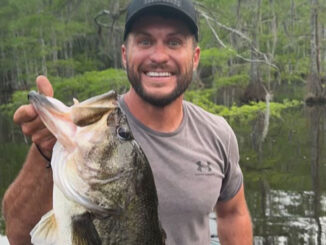
Will specks actually make it inside this year?
Troy Amy is ready for what usually happens in October in Vermilion Bay, specifically in The Cove and at Dry Reef.
If it’s even close to a normal month, beaucoup speckled trout can be caught there, Amy said.
The 50-year-old New Iberia angler should know because he consistently taps the speckled trout population in inside waters from late September through December, weather and water conditions permitting — and most of the time he’s only minutes away from the Quintana Canal Boat Landing at Cypremort Point.
But it wasn’t speckled trout fishing as usual last year in September, October, November and December. In his own words, and those of many crestfallen saltwater fishermen in the area, it was a bust in The Cove, nearby Weeks Bay and other popular places in and around Vermilion Bay. Acadiana was hit with a 100-year flood last August, freshwater poured into the bay and the trout never really showed up in consistent numbers.
Amy, his son Bo, who is also an accomplished speckled trout fishermen, and many others have their fingers crossed that specks will once again infiltrate the inside waters. As of the first week of September, they weren’t in yet. But they were being caught in the outside reefs south and west of Marsh Island and at Tiger Shoals, he said.
“As far as speckled trout, we’re waiting and waiting for them to come in,” Amy said. “They’re just late.”
There was an encouraging sign that the long-anticipated migration would be soon because Bo went on Labor Day and caught 60 white trout and three specks at one of his favorite satellite platforms on Dry Reef, according to the elder Amy.
That catch of white trout — plus the fact the salinity reading was 2.0 ppt at the time, added up to being a “good sign,” Amy said. When the white trout are in, the speckled trout aren’t far behind, he said.
Amy, a tool man at Superior Energy Service, a wireline company in Broussard, enjoys catching speckled trout by the dozens in The Cove and along the wharves in front of camps along Cypremort Point.
“Probably at the end of the month (September) we’ll start catching if the saltwater keeps coming in and if there is no hurricane. October and November are the two best months,” he said, adding that December can be good in those areas and in Shark Bayou if there isn’t an excessive number of major cold fronts roaring through south central Louisiana.
One of his go-to areas in The Cove is a spot behind the last set of rocks near where the first camp wharf comes out. It’s a shallow area, and has lots stumps and oyster reefs that hold speckled trout.
Amy said he goes after them with his trusty pearl Storm Swim Shad with the tail dipped in chartreuse. He uses a slow, steady retrieve to trigger the bite, he said.
Or he gets the speckled trout to smash a glow/chartreuse or salt-n-pepper H&H Cocahoe Minnow on a ¼-ounce leadhead. Because it’s a shallow cove with plenty of hangup possibilities, it’s important to retrieve it quickly. His method is three twitches, reel, three twitches, reel, and then repeat all the way back to the boat.
Amy uses strictly artificials because he “loves to trick fish into biting.” But he stays clear of shrimp under a popping cork and also doesn’t throw Gulp, DOA or Vudu Shrimp, which others use to catch plenty of fish in and around Vermilion Bay.
Another favorite color of his is black/chartreuse.
Out in The Cove, where there are many shell pads, he said the best tactic is to drift with the wind and have an anchor handy, tied short. When a speckled trout is boated, quickly drop the anchor and fish the area thoroughly.
“You can cover a lot of water like that,” he said.
Tidal movement is the key to catching fish — with an outgoing tide best.
“The mouth of the Avery (Canal) is real good on an incoming tide, on the right corner there (looking at it from the water). Everything else is best on an outgoing tide,” he said. “When the tide starts, it’s like a light switch.”
That’s especially true around the camp wharves that are so productive in the fall.
